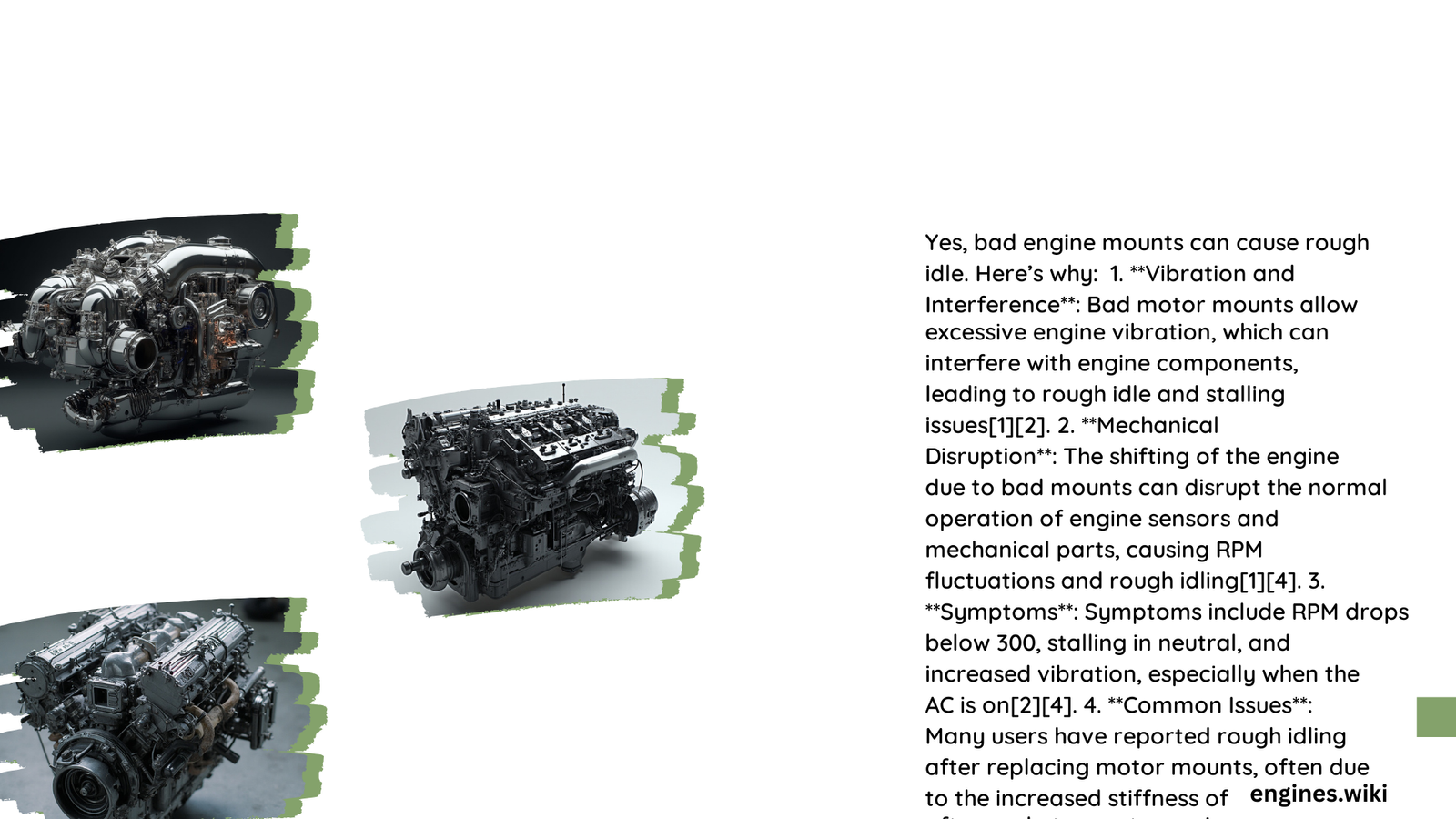Engine mounts play a critical role in vehicle stability, and while they might not directly cause rough idle, their deterioration can significantly impact engine performance. Worn or damaged engine mounts create excessive engine movement, potentially leading to vibration issues, unusual noises, and indirect complications that can manifest as rough idling conditions.
What Are Engine Mounts and Their Primary Function?
Engine mounts are robust rubber and metal components designed to secure the engine to the vehicle’s frame while absorbing vibrations and preventing excessive movement. These crucial parts:
- Stabilize the engine during operation
- Reduce mechanical vibrations
- Prevent direct metal-to-metal contact
- Protect surrounding mechanical components
Can Worn Engine Mounts Contribute to Rough Idle?

While engine mounts do not directly cause rough idle, they can indirectly contribute through several mechanisms:
- Increased Vibration Transmission
- Deteriorated mounts allow more engine movement
- Vibrations transfer more aggressively to the vehicle’s chassis
-
Can create perception of unstable engine performance
-
Potential Sensor Misalignment
- Excessive engine movement might disrupt sensor positioning
- Can lead to inaccurate readings for:
- Mass airflow sensor
- Throttle position sensor
- Oxygen sensors
Diagnostic Symptoms of Problematic Engine Mounts
| Symptom | Severity | Potential Impact |
|---|---|---|
| Excessive Vibration | Moderate | Indicates mount wear |
| Loud Clunking Noise | High | Suggests significant mount damage |
| Engine Movement | Critical | Requires immediate inspection |
How to Identify Failing Engine Mounts?
Visual Inspection Techniques
- Check for visible rubber cracking
- Look for separation between rubber and metal components
- Examine mount for signs of oil contamination
- Inspect for excessive rust or corrosion
Professional Diagnostic Methods
Mechanics typically employ these advanced techniques:
- Physical movement test
- Hydraulic pressure assessment
- Comprehensive vibration analysis
- Computer diagnostic scanning
Replacement Considerations
Cost Factors
- Average replacement cost: $250 – $800
- Labor typically ranges: $100 – $300
- Complexity varies by vehicle make/model
Recommended Maintenance
- Regular visual inspections
- Address mounting issues promptly
- Use high-quality replacement parts
- Consider professional installation
Potential Consequences of Neglecting Engine Mount Issues
Ignoring worn engine mounts can lead to:
– Accelerated wear on transmission components
– Increased stress on drivetrain
– Potential misalignment of critical engine systems
– Reduced overall vehicle performance
Expert Recommendations
Professional mechanics suggest:
– Inspect engine mounts every 50,000-70,000 miles
– Replace mounts showing signs of significant wear
– Use original equipment manufacturer (OEM) parts when possible
– Address mounting issues before they escalate
Final Technical Insights
Engine mounts are not direct rough idle causers but can create conditions that simulate or contribute to performance irregularities. Comprehensive diagnostic approach remains key to accurate identification and resolution.
